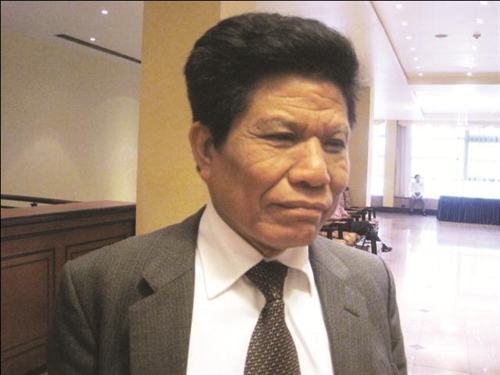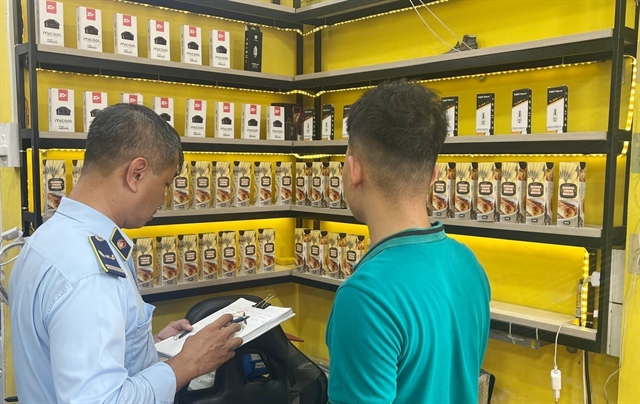 Opinion
Opinion

Phạm Tất Thắng, a senior researcher at the Trade Research Institute under the Ministry of Industry and Trade, speaks to the Hải Quan (Customs) Newspaper about challenges facing the country’s primary industry in the first six months of 2016.
 |
| Phạm Tất Thắng. -- Photo ndh.vn |
Việt Nam’s agriculture has made big leaps in the past 30 years of economic reform and has become a leading exporter of some agricultural produce. But in the first six months of 2016, the industry scored negative growth. How do you respond?
There is nothing surprising about the negative growth of the agriculture sector in the first half of 2016. In the past, our agriculture used to be subsistence farming. However, following the country’s international co-operation expansion, Việt Nam started to export its rice, cashew nut, coffee, rubber and others. As time went by, the volume of agriculture produce export gradually increased and we became a major exporter of agricultural products, including rice, rubber and cashew. But after decades of export growth, the growth rate of our primary industry has reached its peak, in term of both quality and quantity.
So why did our primary industry score a negative growth rate in the first half of 2016?
I should say that agriculture has been the mainstay in stabilising the national economy. But in the past few years, some negative factors have seriously affected the sector’s development, particularly climate change, including the serious salt intrusion in the Mekong Delta and epidemics in animal husbandry.
In addition, the rapid development in the national restructuring process has somehow affected the development of the agriculture sector at certain periods.
Last but not least, when Việt Nam joined the World Trade Union (WTO), the ASEAN Community and a few Free Trade Agreements, the tariffs of many agricultural products were slashed to zero, affecting the growth rate of the agricultural sector.
Don’t you think that the negative growth will affect the country’s economic development in 2016?
I don’t think it will have a big impact on the nation’s economic development as a whole. The country’s economic growth rate will depend on various factors, both subjective and objective.
However, as the country is integrating deeper and deeper internationally, the negative agricultural growth rate is generating concern. We want to expand our market to many countries, particularly to “demand markets”, but our agriculture production remains fragmented and small scale. This is a key factor hindering the penetration of our agricultural produce to high demand markets.
How do you see agricultural growth in the remaining months of 2016 and in 2017?
This is a difficult year for Việt Nam, particularly for the agriculture sector. I don’t see any promising signs of change in the second half of 2016, and the adverse weather keeps playing havoc on the sector.
But in the long run – years ahead, there are some promising signs, particularly when the Trans Pacific Partnership Agreement (TPP) comes into force, many agriculture businesses from Japan, Australia, Canada, the US and others will seek investment opportunities in Viet Nam. In my opinion, this is a golden chance for Việt Nam to develop. If we know how to seize it, I’m confident that in the next five years our agriculture will undergo change.
The government recently adopted a few policies encouraging the transfer of advanced agriculture technology from Australia, Japan and others to Việt Nam.
Would you elaborate on the internal barriers facing the country’s primary industry in its development path?
In my opinion, the first hindrance preventing the agriculture sector’s development is the government’s policy on land aggregation. At present, many big enterprises have expressed their desire to have some 10 ha to invest in agricultural development. But the issue is not resolved because under the current Land Law, land aggregation is prohibited.
The other point I just want to mention is that the government should adopt policies to attract big investors in the agriculture sector. They will serve as locomotive engines in applying new technology in agriculture production and build prestigious brands for Vietnamese agriculture products.
Last but not least, the government should also adopt policies to train farmers to become skilled agriculture workers to help them create high quality products right on their own land.-VNS
In box
According to the General Statistics Office under the Ministry of Planning and Investment, by the end of June 2016, the GDP of the agricultural sector, including forestry and fishery, had dropped 0.18 per cent overall. Agricultural production dropped 0.78 per cent and forestry by 5.75 per cent, but fishery GDP increased 1.25 per cent.
In the period under review, animal husbandry and forestry recorded a good growth rate. Yet they could not compensate for the big losses incurred in the whole sector. As a result, in the first half of 2016 the agriculture sector scored a negative growth rate. VNS




